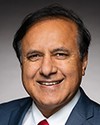Thank you for the question.
I’ll start at the end by responding to the issue of encroaching on jurisdictional areas. As I said at the outset, what we study in international law reflects what happens in federations. For example, when the same subject comes under the jurisdiction of several levels of government, tensions may arise over the management of resources or problems. There is no magic formula.
The basic idea, I think, is to return concretely to what the environmentalist slogan “Think globally, act locally” means, and to apply the principle of subsidiarity seriously. The reason for this is that, in all concerns about the environment and water in particular, as it circulates, local and global aspects are absolutely intertwined. If evidence of pollution has been found in the flesh of polar bears, it’s because the pollution we generate circulates. It wasn’t the Inuit in the far north who generated the chemicals at the source of this pollution. It’s also found in Antarctica; it circulates everywhere. What we produce in one place has an impact on the global cycle. We have to accept that.
I’d like to come back to the earlier presentations, in which vision was mentioned again and again. You talked about symbolic gestures, but I’d rather invoke our imagination. How do we imagine water? That is a fundamental question today. If we consider it only as a resource, we won’t take into account the disruptions to the hydrological cycle that our alterations can produce.
Let’s talk about infrastructure. You’ll recall that a few years ago, Cape Town almost became the first city in the world unable to supply its citizens with drinking water. When you look at South Africa’s hydrological landscape, you’d be forgiven for thinking that this was done on purpose, because the most abundant rainfall in South Africa doesn’t fall in the region where the crops are grown, or where the tourist industry is located. So the country built huge infrastructures to divert water where it was needed. However, at some point, those measures altered the hydrological cycle, and nothing works anymore.
The places where political and administrative decisions are made therefore have strictly nothing to do with water. You can decide which of your local, provincial or federal governments are the most important, but it matters little to the hydrological cycles, both small and large.
At COP21, the Paris conference, there was an enormous amount of activity to demonstrate how better control, better maintenance of the balance of the small hydrological cycle, which is more territorially localized, could help counteract some of the effects of climate change. It’s vital that we accept that we’re part of a cycle.
In Canada, the word “systemic” has often been used for many things in recent years, but from an environmental point of view, we don’t seem to grasp the full extent of what that means. If we take subsidiarity seriously, it means that there have to be rules, as well as sanctions and controls at every level.
There also needs to be an assertive and dynamic political will—if our democratic system still holds, of course—to ensure that everyone, at every level, is subject to the great principle we’ve agreed upon. But in Canada, we haven’t taken that step.





